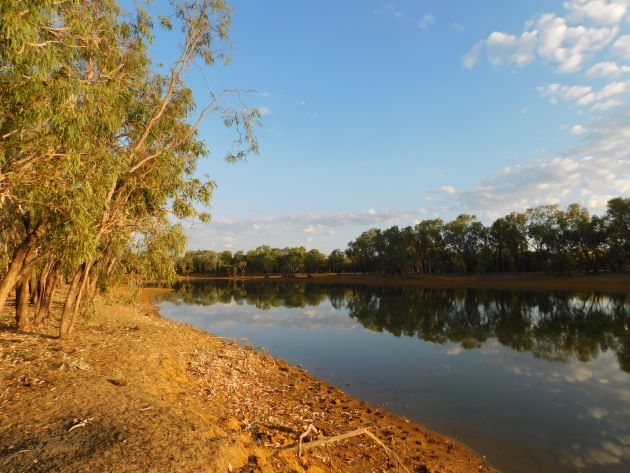
For many of you I doubt you have heard of the expression “Bush telly”. In Australia the term is generally used to describe what you watch when you have no electricity and you are camping and you have to find something else to watch other than a television. It is mostly associated with watching a campfire burn or the night sky. We rarely have a campfire when we camp, but spend a lot of time watching our surroundings and the night sky is always very bright even on nights where the moon is not visible. At home we would watch three or four hours of television in the evening, but in the bush we adapt and we watch the bush for evening activity. We also go to bed when the birds and animals do and arise with them the following day. Australia does have rather vocal bird-life, so we accept that we will be awoken before dawn and as such go to bed early.
We spent two nights camping at Ellendale Dam recently when we did our day trip to Geikie Gorge to observe the Purple-crowned Fairy-wren and also go to the Low level crossing at Fitzroy Crossing. It was very hot and dry and the bird-life all knew where to find water. We definitely didn’t need a television! For ourselves camping is about being at one with nature and unlike those that travel with caravans and every modern convenience we are content in a comfortable chair sitting in the shade beside a dam. We then move to a very comfortable bed inside a tent that offers views of the night sky.
The “big screen” in front and all around us offered plenty to see and there were no advert breaks! We also didn’t need to “change channels” for variety. Here are some of the birds that we observed rather than watching television on a Saturday/Sunday evening in the bush. We added a large branch to the edge of the dam to allow birds to drop in for a drink. It was very popular with the Rufous-throated Honeyeaters, Yellow-tinted Honeyeaters, Banded Honeyeaters, White-winged Trillers, Little Friarbirds and the Zebra Finch.
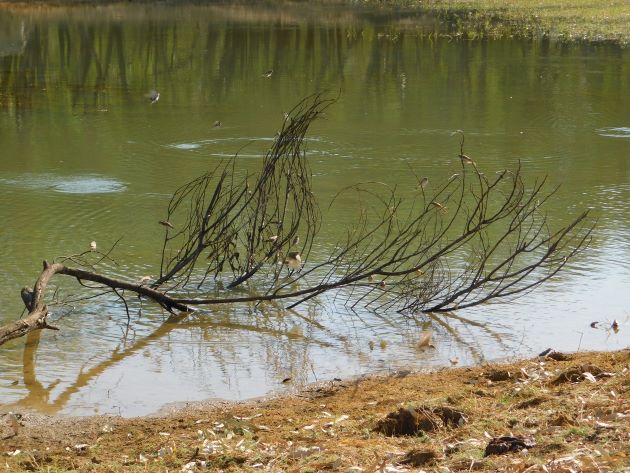
Branch added for the Honeyeaters
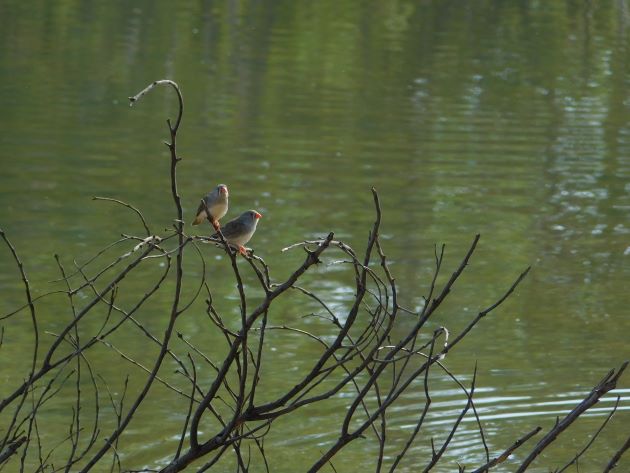
Zebra Finch
There were other sticks about that were used by a variety of birds to access the water around the dam.
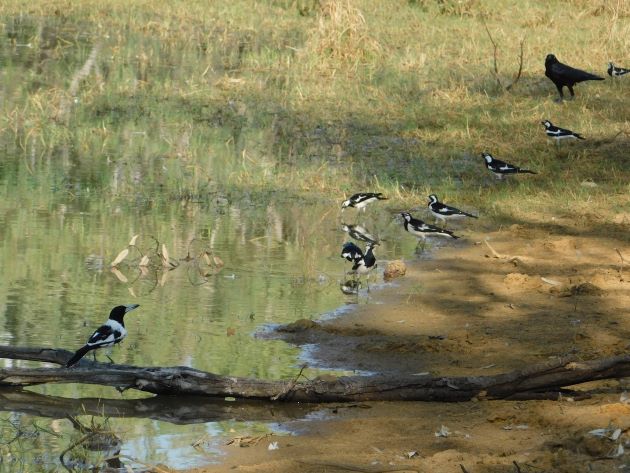
Pied Butcherbird, Torresian Crow and multiple Magpie-larks
A family group of eight Grey-crowned Babblers bounced around the surrounding trees and dropped to the water to drink.
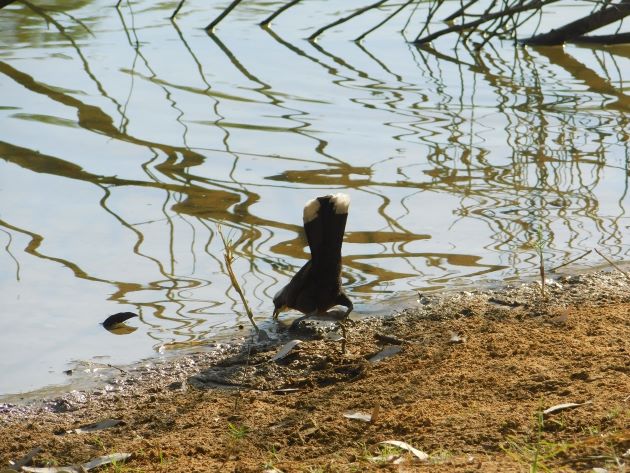
Grey-crowned Babbler
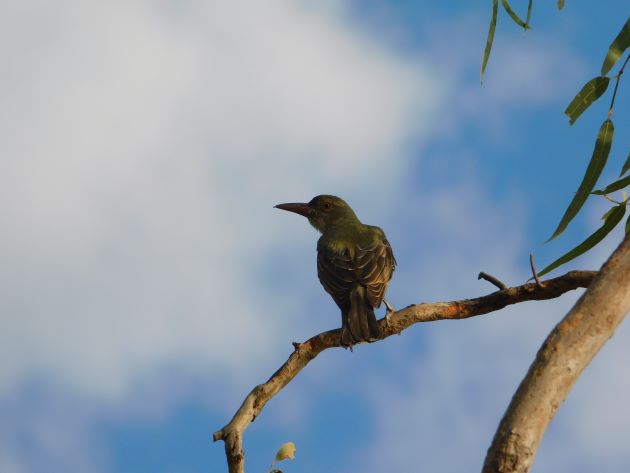
Olive-backed Oriole
Varied Lorikeets and Budgerigars came to the surrounding trees and then dropped in close to the water, drank and left again in a matter of seconds. Just one green blur! Budgerigars have a much longer and thin tail in comparison to the dumpier Varied Lorikeet, which also has a pink colour on its head. Cockatiels were also very vocal as they came in and briefly drank and then returned to the surrounding trees.
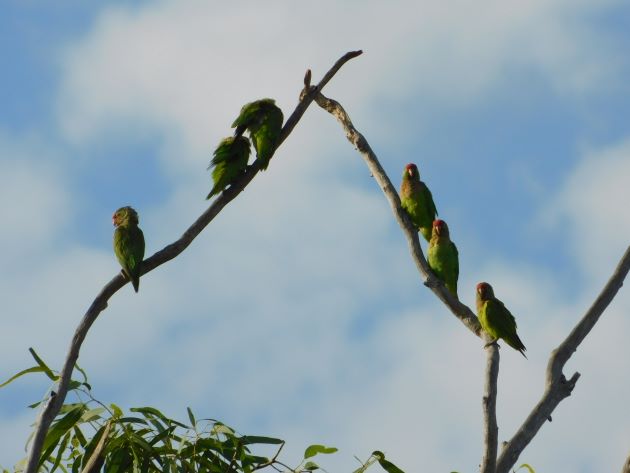
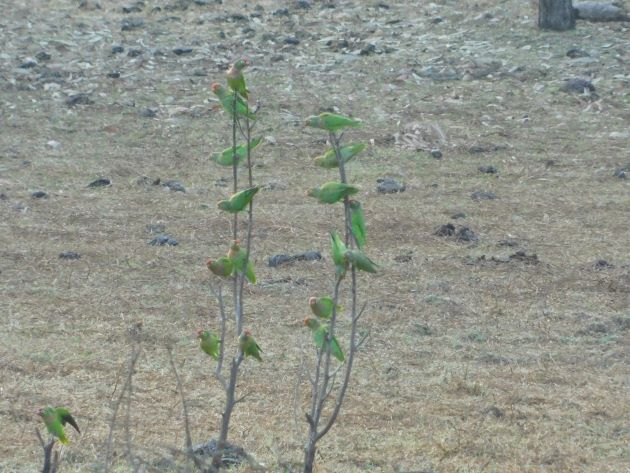
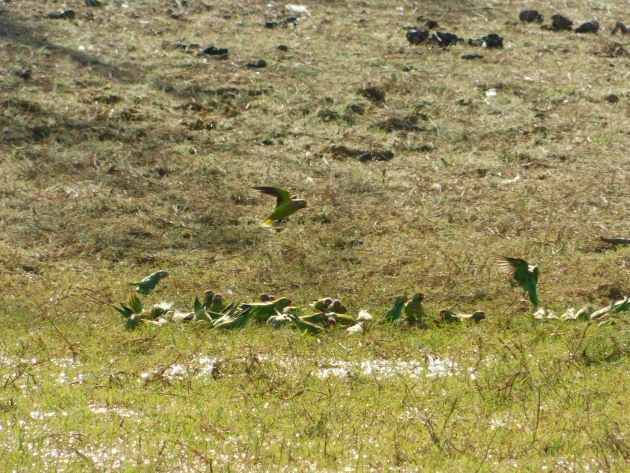
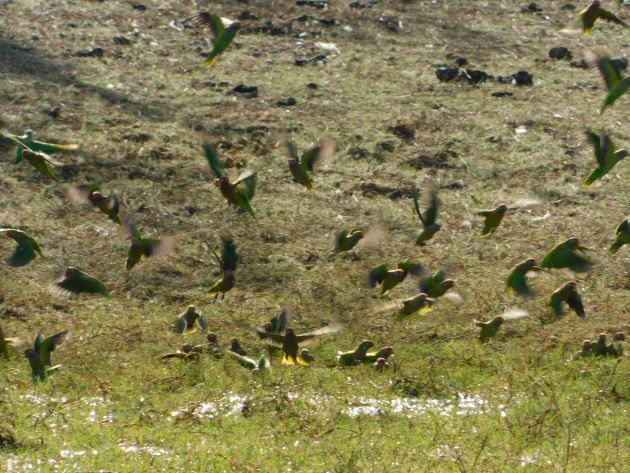
Varied Lorikeets
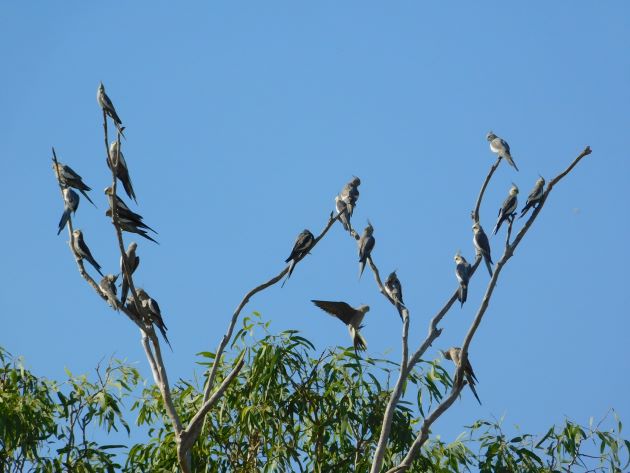
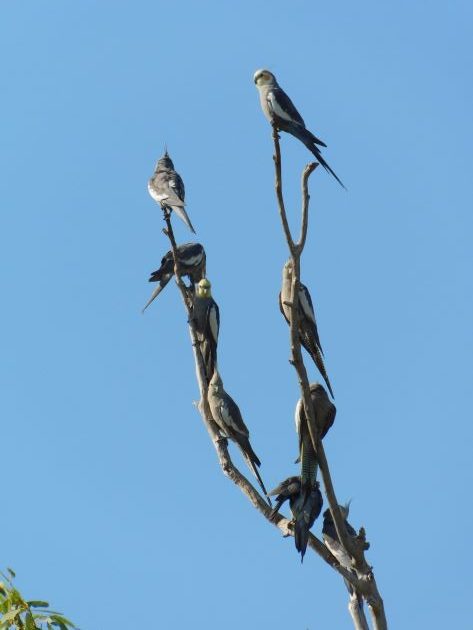
Cockatiels
The Red-tailed Black Cockatoos and the Galahs also positioned themselves in the tall trees around the dam and dropped in to drink.
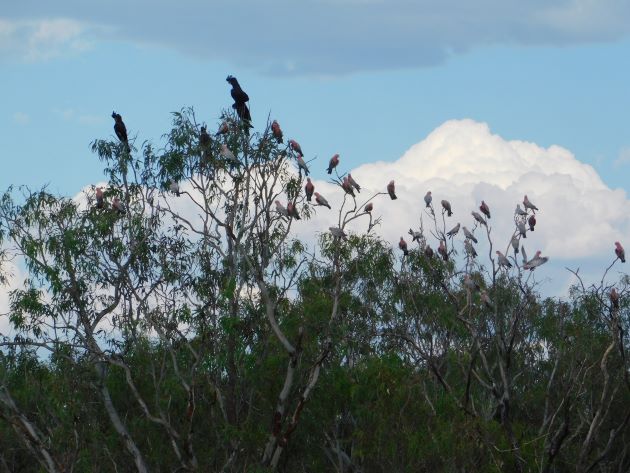
Galahs and Red-tailed Black Cockatoos
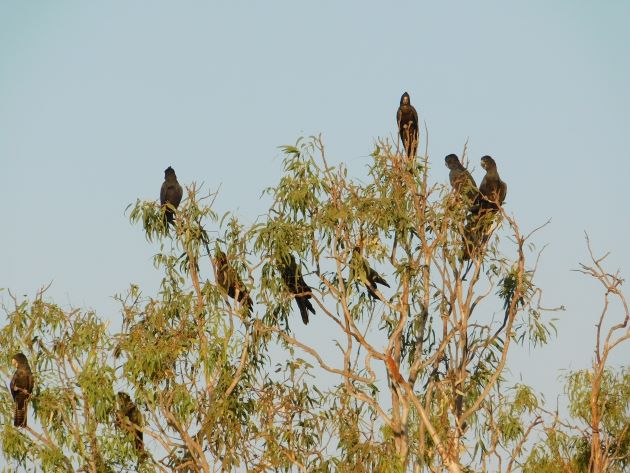
Red-tailed Black Cockatoos
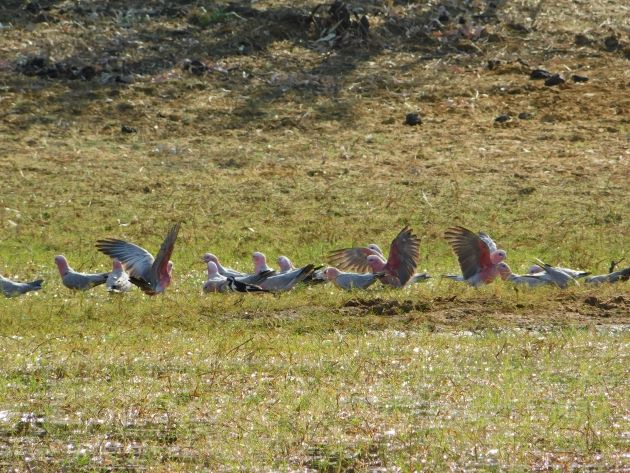
Galahs coming to drink
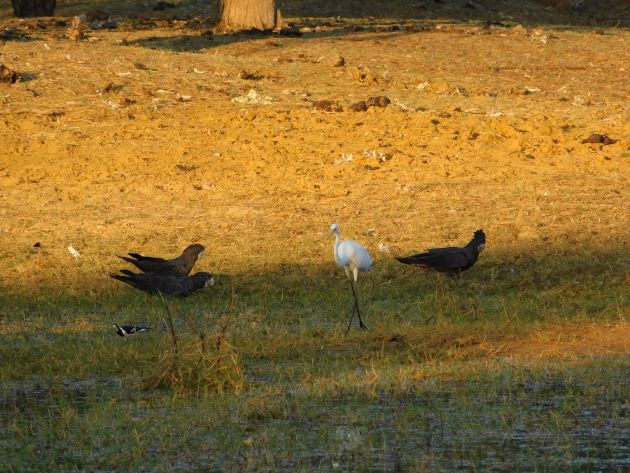
Red-tailed Black Cockatoos, Great Egret and Magpie-lark
The edges of the dam were popular with several other birds and they came down to drink at the end of the day and agile wallabies ventured in on dusk to drink.
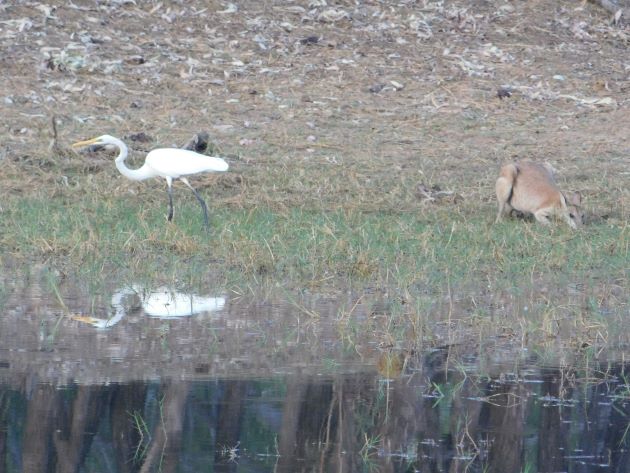
Great Egret and agile wallaby
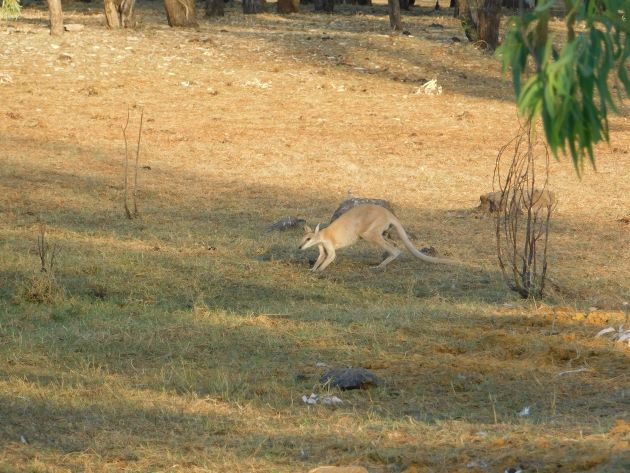
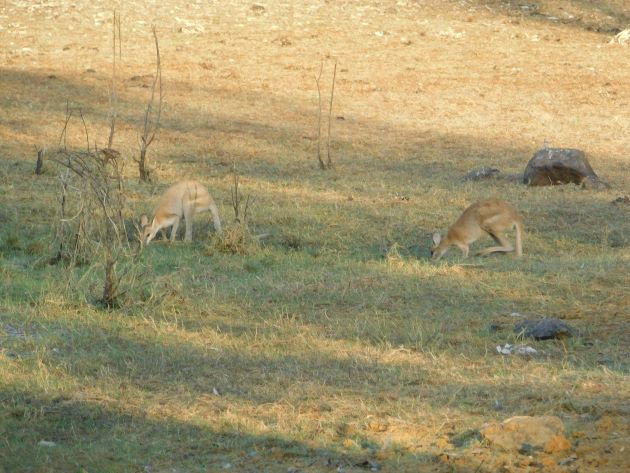
Agile wallabies
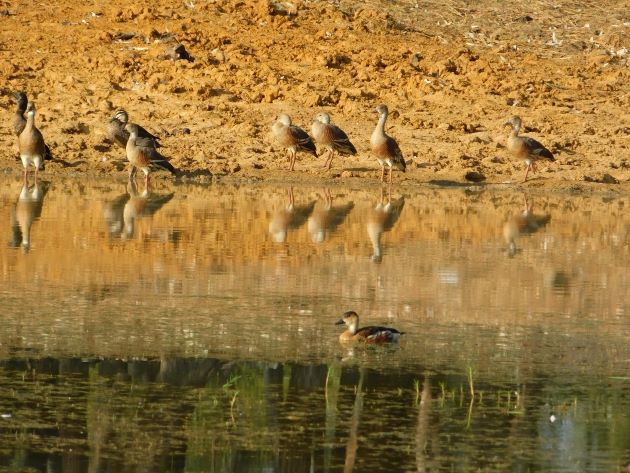
Plumed-whistling-ducks, a lone swimming Wandering Whistling-duck, a Pacific Black Duck and a Little Black Cormorant
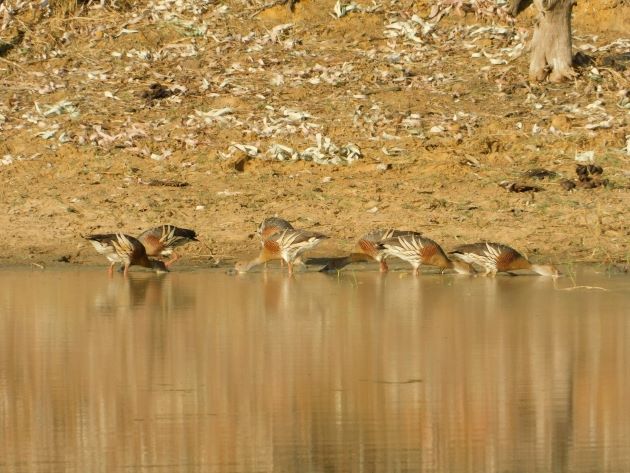
Plumed Whistling-ducks
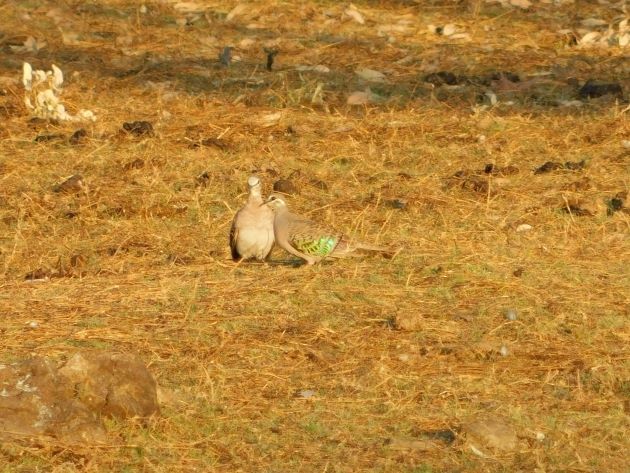
Common Bronzewings-two dozen present on dusk
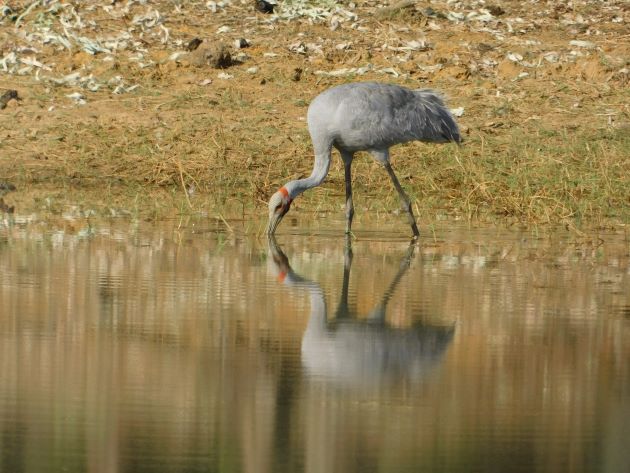
Brolga
This is a handful of over fifty bird species that we observed at the dam both late evening and early morning and yes, they are mostly very vocal!
After the sun went down our eyes were then concentrating on the sky to watch the “bush telly”. We always observe satellites crossing over the sky in the north of Australia and often shooting stars. After sunset our bird list always continues, but that has to be mostly from sound rather than sight.
If you are interested in some of the other Australian colloquiums then the Macquarie dictionary blog has some interesting information.


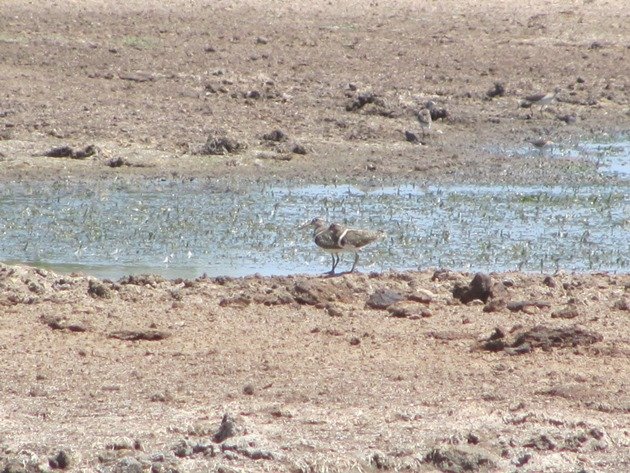
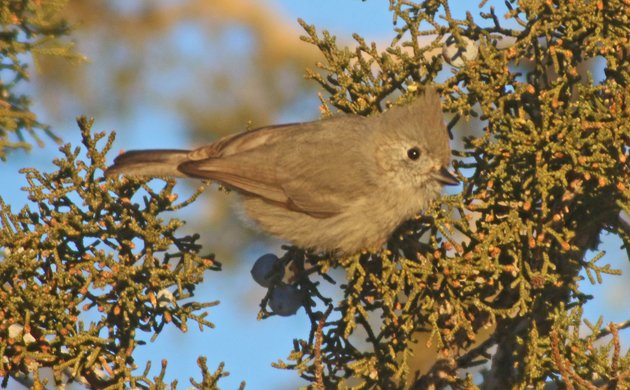
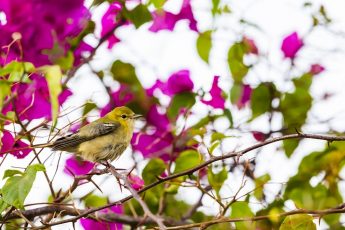

 New writers welcome – please contact us for details.
New writers welcome – please contact us for details.

















Wonderful observations, descriptions and photos from an enviable camping trip! Thank you, Clare!
Thanks, Ruth.
What a great spot! I’m not a camper, but I’d love some Brush telly, especially now that I’ve seen the Australian sky.
We hope you had a good trip and topped up your life list with a few birds!